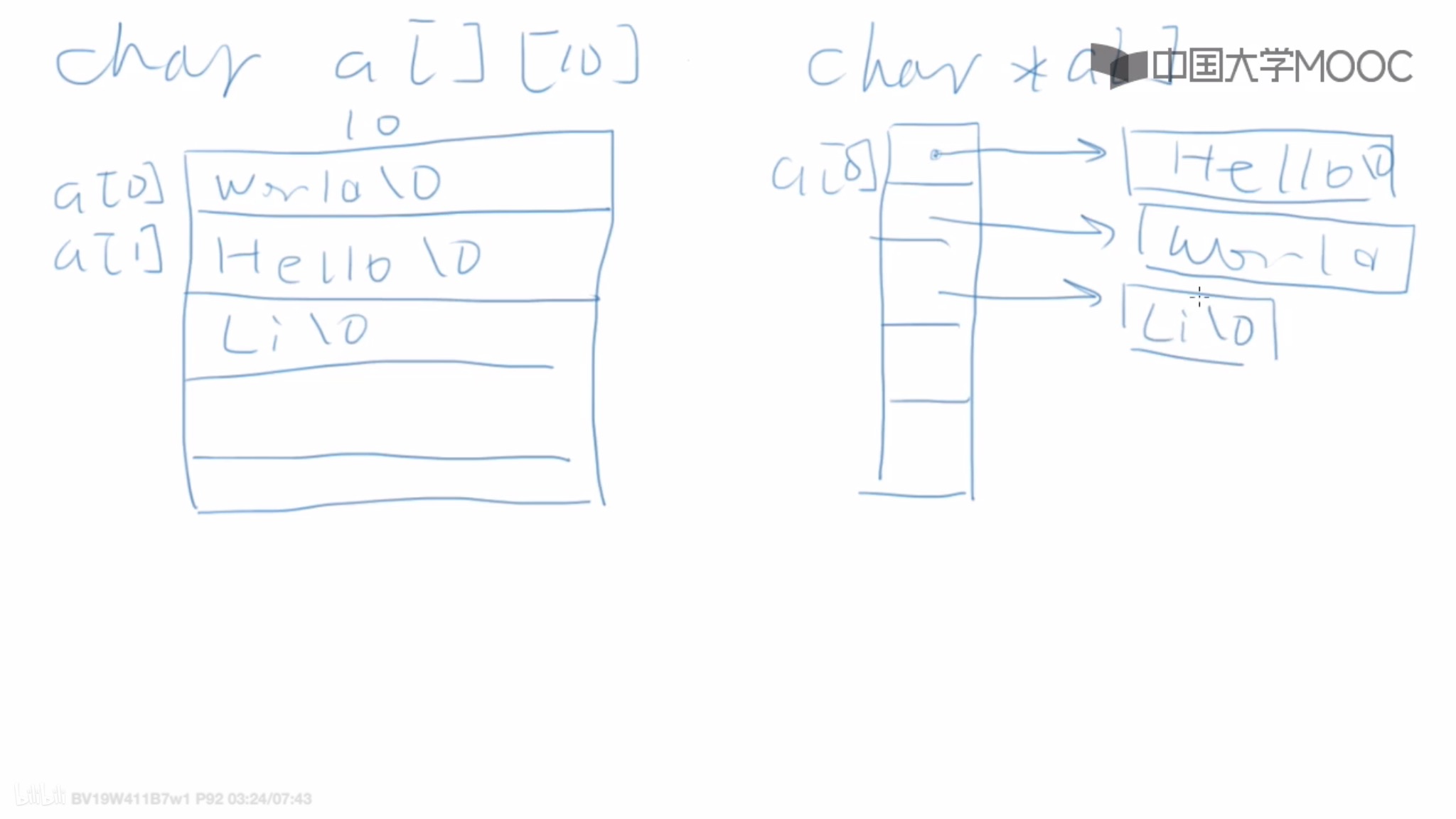C语言
指针
#include <stdio.h> void f(int *p); int main(void) { int i = 6; printf("&i=%p\n", &i); f(&i); } void f(int *p) { printf("p=%p\n", p); }

指针与const
1.指针是const
- 表示一旦得到了某个变量的地址,不能再指向其他变量
int *const q = &i; //q是const *q = 26; //OK
q++; //ERROR
- 表示不能通过这个指针去修改那个变量(并不能使得那个变量成为const)
const int *p = &i; *p =26; //ERROR i = 26; //OK p = &j; //OK
- 这些是啥意思?
int i; const int* p1 = &i; int const* p2 = &i; int *const p3 = &i;
判断哪个被const 了的标志是const在*的前面还是后面
const在*前面表示它所指的东西不能被修改。
const在*后面表示指针不能被修改。
指针运算
*p++
- 取出p所指的那个数据来,完事之后顺便把p移到下一个位置去
- *的优先级虽然高,但没有++高
- 常用于数组类的连续空间操作
- 在某些CPU上,这可以直接被翻译成一条汇编指令
用指针干啥
- 需要传入较大的数据时用作参数
- 传入数组后对数组做操作
- 函数返回不止一个结果
- 需要用函数来修改不止一个变量
- 动态申请的内存...
动态内存分配
malloc返回的是void
#include <stdio.h> #include <stdlib.h> int main() { int number; int *a; int i; printf("输入数量:"); scanf("%d", &number); // int a[number]; a = (int *)malloc(number * sizeof(int)); for (i = 0; i < number; i++) { scanf("%d", &a[i]); } for (i = number - 1; i >= 0; i--) printf("%d ", a[i]); free(a); return 0; }
字符串变量
指针还是数组?
char *str= "hello";
char word[ ] = "hello";
- 数组:这个字符串在这里
-作为本地变量空间自动被回收
- 指针:这个字符串不知道在哪里
-处理参数
-动态分配空间
如果要构造一个字符串->数组
如果要处理一个字符串->指针
char*是字符串?
- 字符串可以表达为char*的形式
- char*不一定是字符串 --本意是指向字符的指针,可能指向的是字符的数组(就像int*一样)--这里有一个指针,这个指针指向一个字节或者一串连续的字节
只有它所指的字符数组组有结尾的0,才能说它所指的是字符串。
字符串数组
int main(void)
{
a[0]-->char[10]
char a[][10]={
"Hello",
"World",
"shwjhfiuwhfi"
};
return 0;
}
int main(void) { a[0]-->char * char *a[]={ "Hello", "World", "shwjhfiuwhfi" }; return 0; }

字符串函数strlen
#include <stdio.h> size_t mylen(char *s) { int index = 0; while (s[index] != '\0') { index++; } return index; } int main() { char line[] = "Happy"; printf("strlen = %lu\n", mylen(line)); printf("sizeof = %lu\n", sizeof(line)); return 0; }
字符串函数strcmp
#include <stdio.h> #include <string.h> int mycmp(const char *s1, const char *s2) { // int idx = 0; // while (s1[idx] == s2[idx] && s1[idx] != '\0') // { // idx++; // } //return s1[idx] - s2[idx]; while(*s1 == *s2 && *s1 != '\0') { s1++; s2++; } return *s1 - *s2; } int main(int argc, char const *argv) { char s1[] = "abc"; char s2[] = "Abc"; printf("%d\n", mycmp(s1, s2)); }
字符串函数strcpy
- char * strcpy(char *restrict dst, const char *restrict src);
- 把src的字符串拷贝到dst
- restrict表面src和dst不重叠(c99)
- 返回dst
- 为了能链起代码来
#include <stdio.h> char* mycpy(char *dst,const char *src) { // int idx = 0; // while(src[idx]){ // dst[idx] = src[idx]; // idx++; // } // dst[idx] = '\0'; } int main(int argc, char const *argv[]) { char s1[] = "abc"; char s2[] = "abc"; strcpy(s1, s2); }
枚举
枚举是一种用户定义的数据类型,他用关键字 enum 以如下语法来声明:
enum 枚举类型名字 {名字0,名字1,名字n};
enum colors {red, yellow, green};
就创建了三个常量,red 的值是0,yellow是1,而green是2,它们的类型是int,值依次从 0 到 n 。





 浙公网安备 33010602011771号
浙公网安备 33010602011771号